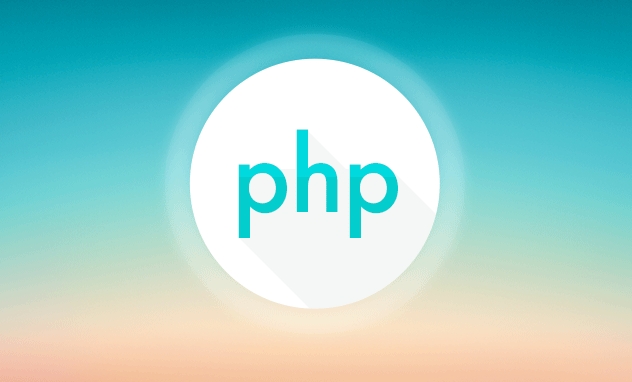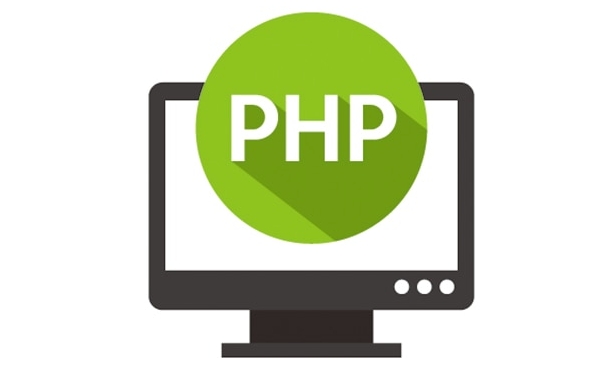 Backend Development
Backend Development
 PHP Tutorial
PHP Tutorial
 One-click deployment of a PHP environment: Tool recommendations and tutorials
One-click deployment of a PHP environment: Tool recommendations and tutorials
One-click deployment of a PHP environment: Tool recommendations and tutorials
Jun 28, 2025 am 02:07 AMOne-click deployment refers to the use of pre-packaged software to complete the installation and configuration of the development environment with minimal user input, which is especially suitable for beginners or to quickly establish a local development environment. Common PHP one-click deployment tools include XAMPP (cross-platform), WAMP (Windows), MAMP (macOS), and Laragon (lightweight and support multiple PHP versions). Taking XAMPP as an example, the settings are to download the installation package, select component installation, start Apache and MySQL services, and access localhost through the browser to test whether the environment is successful. Put the PHP file into the htdocs folder and execute it. Laragon provides a more modern interface, supporting rapid creation of virtual hosts and switching PHP versions. In terms of maintenance, it is recommended to regularly update tools, backup databases and file files, avoid modifying core settings, and use virtual hosts to simulate real environments.

Setting up a PHP environment usually involves installing multiple components like PHP, Apache/Nginx, and MySQL. However, one-click deployment tools simplify this process by bundling these components into an all-in-one package. This makes it easier for developers to get started without manually configuring each part.

What is one-click deployment?
One-click deployment refers to using pre-packaged software that installs and configures a complete development environment with minimal user input. These tools are especially useful for beginners or when setting up a local development environment quickly.

Some of the most popular tools for one-click deployment of a PHP environment include:
- XAMPP – A cross-platform solution that includes Apache, MySQL, PHP, and Perl.
- WAMP – Specifically designed for Windows, WAMP stands for Windows, Apache, MySQL, and PHP.
- MAMP – Similar to WAMP but tailored for macOS users.
- Laragon – A lightweight and fast alternative for Windows, supporting multiple PHP versions and databases.
Each of these tools offer a simple interface to start, stop, and manage services without deep system configuration.

How to use XAMPP for PHP setup
XAMPP is one of the most widely used tools for deploying PHP environments quickly. Here's how to set it up:
- Download XAMPP : Go to the official XAMPP website and download the version suitable for your operating system.
- Install the package : Run the installer and choose the components you want to install (Apache, MySQL, PHP, etc.). You can stick with the default options unless you have specific needs.
- Start Apache and MySQL : Open the XAMPP control panel, then click "Start" next to Apache and MySQL. Once running, you'll see a green status indicator.
- Test your installation : Open a browser and go to
http://localhost. If the XAMPP welcome page appears, your environment is working correctly. - Place your PHP files : Put your PHP scripts in the
htdocsfolder inside the XAMPP installation directory. Access them viahttp://localhost/your-folder-name.
This setup allows immediate testing of PHP scripts without worrying about server configurations.
Using Laragon for faster deployment
If you're on Windows and prefer a more modern and lightweight option, Laragon is a great choice. It supports multiple PHP versions, databases like MySQL and PostgreSQL, and even comes with built-in tools like Composer and Node.js.
Here's how to deploy PHP using Laragon:
- Download and install : Grab the latest version from the Laragon website . The installation is straightforward—just follow the prompts.
- Launch Laragon : After installation, open the application. You'll see a clean UI with buttons to start/stop services.
- Start Apache and MySQL : Click "Start All" or individually start Apache and MySQL if needed.
- Access localhost : Open your browser and go to
http://localhost. You should see a default welcome page. - Create projects easily : Laragon lets you create new projects with a single command in its terminal. For example:
laragon create myproject
This creates a new virtual host at
http://myproject.test.
Laragon also supports quick switching between PHP versions and has a built-in terminal, making it ideal for developers who frequently test different settings.
Tips for maintaining your one-click PHP environment
Once your environment is running, there are a few things to keep in mind:
- Keep your tool updated to ensure compatibility and security.
- Regularly back up your database and project files, especially before updating or changing configurations.
- Avoid modifying core configuration files unless necessary, as this might break the setup.
- Use virtual hosts whenever possible to simulate real web environments locally.
These small habits help maintain a smooth and stable development workflow.
Basically that's it.
The above is the detailed content of One-click deployment of a PHP environment: Tool recommendations and tutorials. For more information, please follow other related articles on the PHP Chinese website!

Hot AI Tools

Undress AI Tool
Undress images for free

Undresser.AI Undress
AI-powered app for creating realistic nude photos

AI Clothes Remover
Online AI tool for removing clothes from photos.

Clothoff.io
AI clothes remover

Video Face Swap
Swap faces in any video effortlessly with our completely free AI face swap tool!

Hot Article

Hot Tools

Notepad++7.3.1
Easy-to-use and free code editor

SublimeText3 Chinese version
Chinese version, very easy to use

Zend Studio 13.0.1
Powerful PHP integrated development environment

Dreamweaver CS6
Visual web development tools

SublimeText3 Mac version
God-level code editing software (SublimeText3)
 PHP Variable Scope Explained
Jul 17, 2025 am 04:16 AM
PHP Variable Scope Explained
Jul 17, 2025 am 04:16 AM
Common problems and solutions for PHP variable scope include: 1. The global variable cannot be accessed within the function, and it needs to be passed in using the global keyword or parameter; 2. The static variable is declared with static, and it is only initialized once and the value is maintained between multiple calls; 3. Hyperglobal variables such as $_GET and $_POST can be used directly in any scope, but you need to pay attention to safe filtering; 4. Anonymous functions need to introduce parent scope variables through the use keyword, and when modifying external variables, you need to pass a reference. Mastering these rules can help avoid errors and improve code stability.
 How to handle File Uploads securely in PHP?
Jul 08, 2025 am 02:37 AM
How to handle File Uploads securely in PHP?
Jul 08, 2025 am 02:37 AM
To safely handle PHP file uploads, you need to verify the source and type, control the file name and path, set server restrictions, and process media files twice. 1. Verify the upload source to prevent CSRF through token and detect the real MIME type through finfo_file using whitelist control; 2. Rename the file to a random string and determine the extension to store it in a non-Web directory according to the detection type; 3. PHP configuration limits the upload size and temporary directory Nginx/Apache prohibits access to the upload directory; 4. The GD library resaves the pictures to clear potential malicious data.
 Commenting Out Code in PHP
Jul 18, 2025 am 04:57 AM
Commenting Out Code in PHP
Jul 18, 2025 am 04:57 AM
There are three common methods for PHP comment code: 1. Use // or # to block one line of code, and it is recommended to use //; 2. Use /.../ to wrap code blocks with multiple lines, which cannot be nested but can be crossed; 3. Combination skills comments such as using /if(){}/ to control logic blocks, or to improve efficiency with editor shortcut keys, you should pay attention to closing symbols and avoid nesting when using them.
 How Do Generators Work in PHP?
Jul 11, 2025 am 03:12 AM
How Do Generators Work in PHP?
Jul 11, 2025 am 03:12 AM
AgeneratorinPHPisamemory-efficientwaytoiterateoverlargedatasetsbyyieldingvaluesoneatatimeinsteadofreturningthemallatonce.1.Generatorsusetheyieldkeywordtoproducevaluesondemand,reducingmemoryusage.2.Theyareusefulforhandlingbigloops,readinglargefiles,or
 Tips for Writing PHP Comments
Jul 18, 2025 am 04:51 AM
Tips for Writing PHP Comments
Jul 18, 2025 am 04:51 AM
The key to writing PHP comments is to clarify the purpose and specifications. Comments should explain "why" rather than "what was done", avoiding redundancy or too simplicity. 1. Use a unified format, such as docblock (/*/) for class and method descriptions to improve readability and tool compatibility; 2. Emphasize the reasons behind the logic, such as why JS jumps need to be output manually; 3. Add an overview description before complex code, describe the process in steps, and help understand the overall idea; 4. Use TODO and FIXME rationally to mark to-do items and problems to facilitate subsequent tracking and collaboration. Good annotations can reduce communication costs and improve code maintenance efficiency.
 How to access a character in a string by index in PHP
Jul 12, 2025 am 03:15 AM
How to access a character in a string by index in PHP
Jul 12, 2025 am 03:15 AM
In PHP, you can use square brackets or curly braces to obtain string specific index characters, but square brackets are recommended; the index starts from 0, and the access outside the range returns a null value and cannot be assigned a value; mb_substr is required to handle multi-byte characters. For example: $str="hello";echo$str[0]; output h; and Chinese characters such as mb_substr($str,1,1) need to obtain the correct result; in actual applications, the length of the string should be checked before looping, dynamic strings need to be verified for validity, and multilingual projects recommend using multi-byte security functions uniformly.
 Quick PHP Installation Tutorial
Jul 18, 2025 am 04:52 AM
Quick PHP Installation Tutorial
Jul 18, 2025 am 04:52 AM
ToinstallPHPquickly,useXAMPPonWindowsorHomebrewonmacOS.1.OnWindows,downloadandinstallXAMPP,selectcomponents,startApache,andplacefilesinhtdocs.2.Alternatively,manuallyinstallPHPfromphp.netandsetupaserverlikeApache.3.OnmacOS,installHomebrew,thenrun'bre
 Learning PHP: A Beginner's Guide
Jul 18, 2025 am 04:54 AM
Learning PHP: A Beginner's Guide
Jul 18, 2025 am 04:54 AM
TolearnPHPeffectively,startbysettingupalocalserverenvironmentusingtoolslikeXAMPPandacodeeditorlikeVSCode.1)InstallXAMPPforApache,MySQL,andPHP.2)Useacodeeditorforsyntaxsupport.3)TestyoursetupwithasimplePHPfile.Next,learnPHPbasicsincludingvariables,ech





